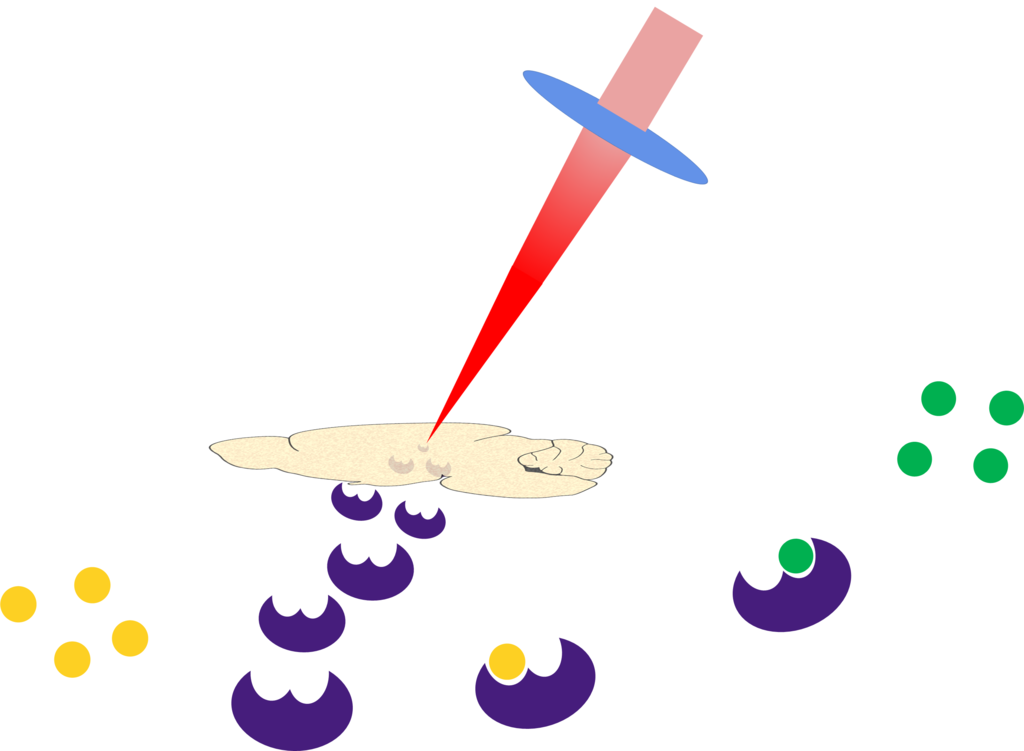Wang, K., Donnarumma, F., Baldone, M. D., & Murray, K. K. Infrared laser ablation and capture of enzymes with conserved activity. Anal Chim Acta, 1027, 41–46 (2018).

Abstract
Infrared (IR) laser ablation at 3 μm wavelength was used to extract enzymes from tissue and quantitatively determine their activity. Experiments were conducted with trypsin, which was ablated, captured and then used to digest bovine serum albumin (BSA). BSA digests were evaluated using matrix-assisted laser desorption ionization (MALDI) mass spectrometry (MS) and sequence coverage of 59% was achieved. Quantification was performed using trypsin and catalase standards and rat brain tissue by fluorescence spectroscopy. Both enzymes were reproducibly transferred with an efficiency of 75 ± 8% at laser fluences between 10 and 30 kJ/m2. Trypsin retained 37 ± 2% of its activity and catalase retained 50 ± 7%. The activity of catalase from tissue was tested using three consecutive 50 μm thick rat brain sections. Two 4 mm2 regions were ablated and captured from the cortex and cerebellum regions. The absolute catalase concentration in the two regions was consistent with previously published data, demonstrating transfer of intact enzymes from tissue.

